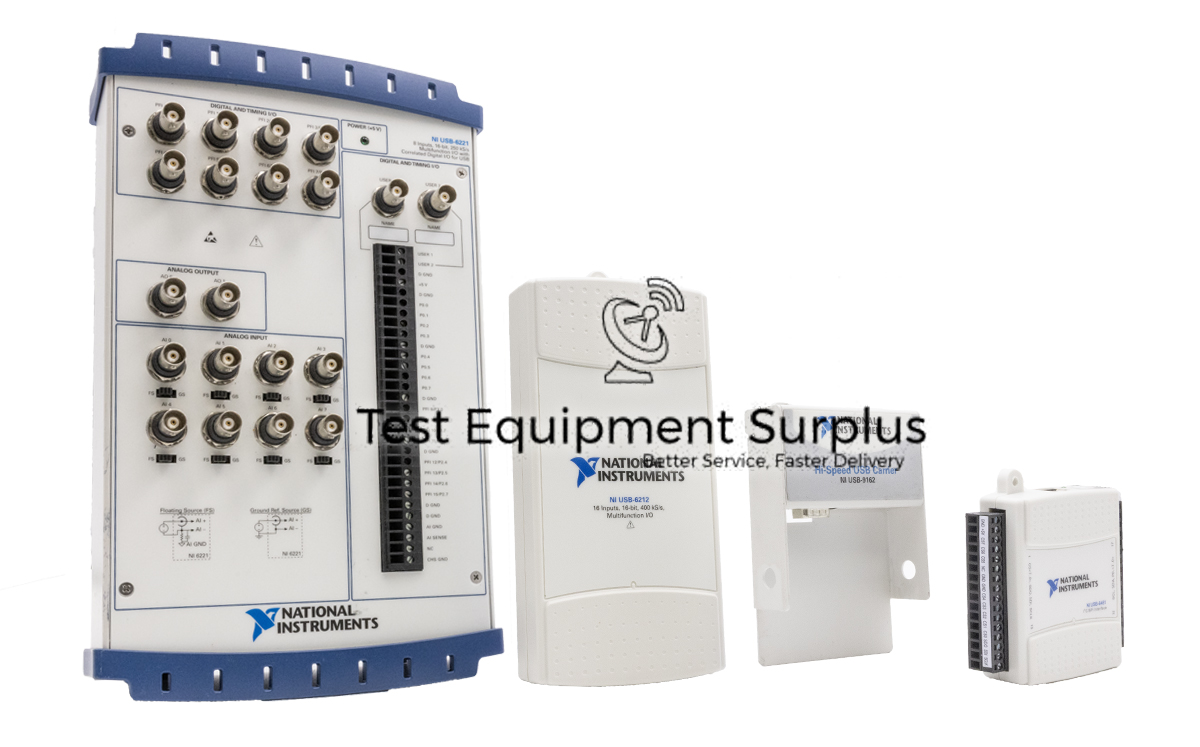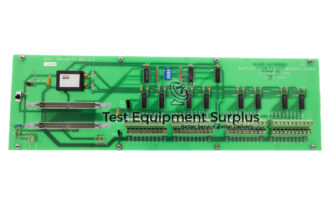Description
The National Instruments USB-6000 Multifunction I/O Device, with part numbers 782602-01 and the OEM non-enclosed version 782603-01, is designed to cater to a wide range of data logging and measurement applications. This device features 8 analog input channels with a 12-bit input resolution and a sampling rate of 10 kS/s, ensuring a full-scale single-ended absolute accuracy of 26 mV. Additionally, it is equipped with 4 bidirectional digital I/O channels and a 32-bit unidirectional counter capable of handling a maximum input frequency of 5 MHz.
The USB-6000 is designed to be robust in industrial settings, particularly in environments prone to electromagnetic interferences, offering reliable performance despite such conditions. Power requirements for the device are modest, needing only a DC voltage ranging from 4.30 VDC to 5.25 VDC, with an input current of up to 150mA via USB. This combination of features and resilience makes the USB-6000 an excellent choice for a variety of measurement and automation tasks.
| Specification | Detail |
|---|---|
| Manufacturer | National Instruments |
| Product Name | USB-6000 Multifunction I/O Device |
| Part Numbers | 782602-01, 782603-01 (OEM non-enclosed version) |
| Analog Input Channels | 8 |
| Input Resolution | 12 bits |
| Sampling Rate | 10 kS/s |
| Full-Scale Single-Ended Absolute Accuracy | 26 mV |
| Digital I/O Channels | 4 bidirectional |
| Counter | One 32-bit unidirectional, Max input frequency of 5 MHz |
| Power Supply Requirements | 4.30 VDC to 5.25 VDC |
| Input Current | Up to 150mA via USB |
| Electromagnetic Compatibility | Appropriate for environments with electromagnetic interferences |
Question 1: What is the full-scale single-ended absolute accuracy of the National Instruments USB-6000 Multifunction I/O Device’s analog input channels?
Answer 1: The full-scale single-ended absolute accuracy of the National Instruments USB-6000 Multifunction I/O Device’s analog input channels is 26 mV.
Question 2: What is the accuracy and maximum input frequency of the 32-bit unidirectional counter in the National Instruments USB-6000 Multifunction I/O Device?
Answer 2: The National Instruments USB-6000 Multifunction I/O Device’s analog input channels have an absolute accuracy of 26 mV, and it maintains reliable performance in industrial settings prone to electromagnetic interferences through its robust design tailored for such challenging environments.
Question 3: What is the absolute accuracy of the National Instruments USB-6000 Multifunction I/O Device’s analog input channels, and how does it maintain reliable performance in industrial settings prone to electromagnetic interferences?
Answer 3: The 32-bit unidirectional counter in the National Instruments USB-6000 Multifunction I/O Device has a maximum input frequency of 5 MHz, but the accuracy is not specified in the provided description.
Question 4: What are the key specifications and design features that make the National Instruments USB-6000 Multifunction I/O Device suitable for industrial data logging and measurement applications?
Answer 4: The National Instruments USB-6000 Multifunction I/O Device is suitable for industrial measurement and data logging applications due to its 8 analog input channels with 12-bit resolution and 10 kS/s sampling rate, 4 bidirectional digital I/O channels, a 32-bit counter with a 5 MHz maximum input frequency, robust design with electromagnetic interference resilience, and modest power requirements of 4.30 to 5.25 VDC with up to 150mA input current via USB
Question 5: What are the features and design specifications that make the National Instruments USB-6000 Multifunction I/O Device suitable for industrial measurement and data logging applications?
Answer 5: The National Instruments USB-6000 Multifunction I/O Device is suitable for industrial data logging and measurement applications due to its 8 analog input channels with 12-bit resolution and a 10 kS/s sampling rate for precise measurements, its robust design that withstands electromagnetic interference, 4 bidirectional digital I/O channels, a 32-bit counter with a 5 MHz maximum input frequency, and a modest power requirement of 4.30 to 5.25 VDC with up to




